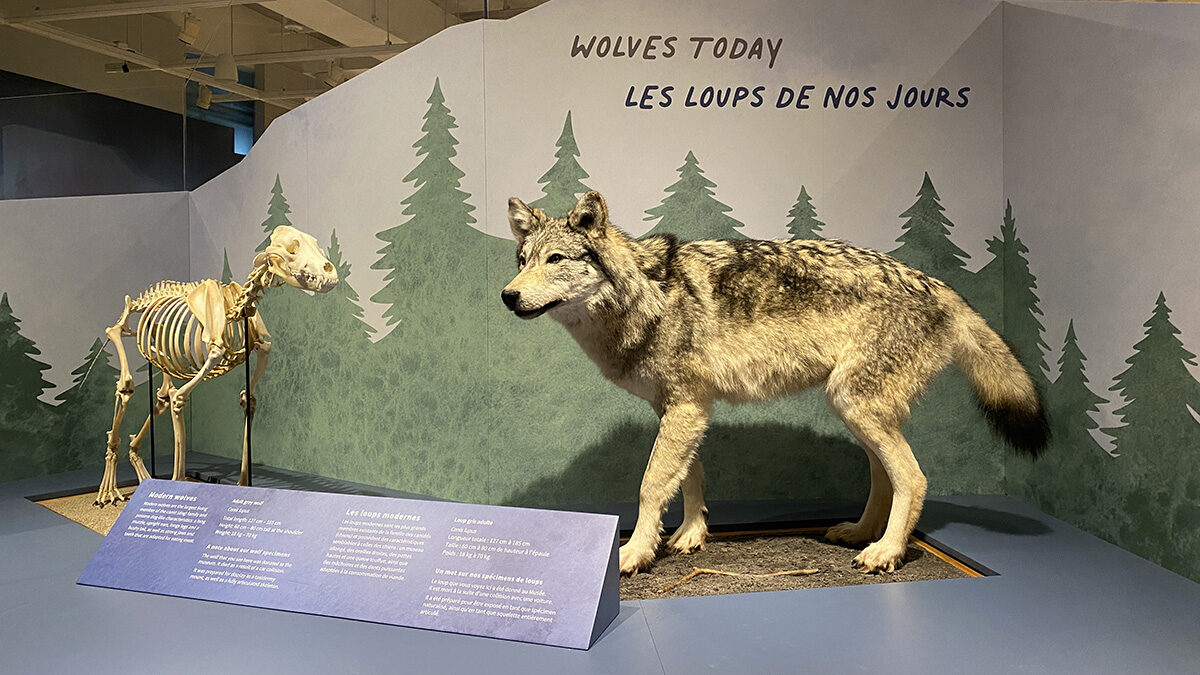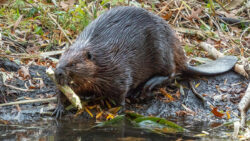Friend or foe? Wolves have long been seen as dangerous and scary. Children have been taught to see them as the “bad guy” in classic stories such as The Three Little Pigs and Little Red Riding Hood.
The Canadian Museum of Nature is setting the record straight with a year-long exhibit that aims to change negative perceptions surrounding wolves.
“Wolves: Shape-shifters in a Changing World” is on now at the McLeod Street museum in Centretown and it explores the evolutionary success of wolves through “scientific research, museum specimens, video, cultural stories and art and vivid photographs.”
The exhibit offers an interactive experience. A wolf skeleton greets you at the entrance to the display, followed by multi-sensory encounters in which visitors can touch fur, smell prey and hear howling.
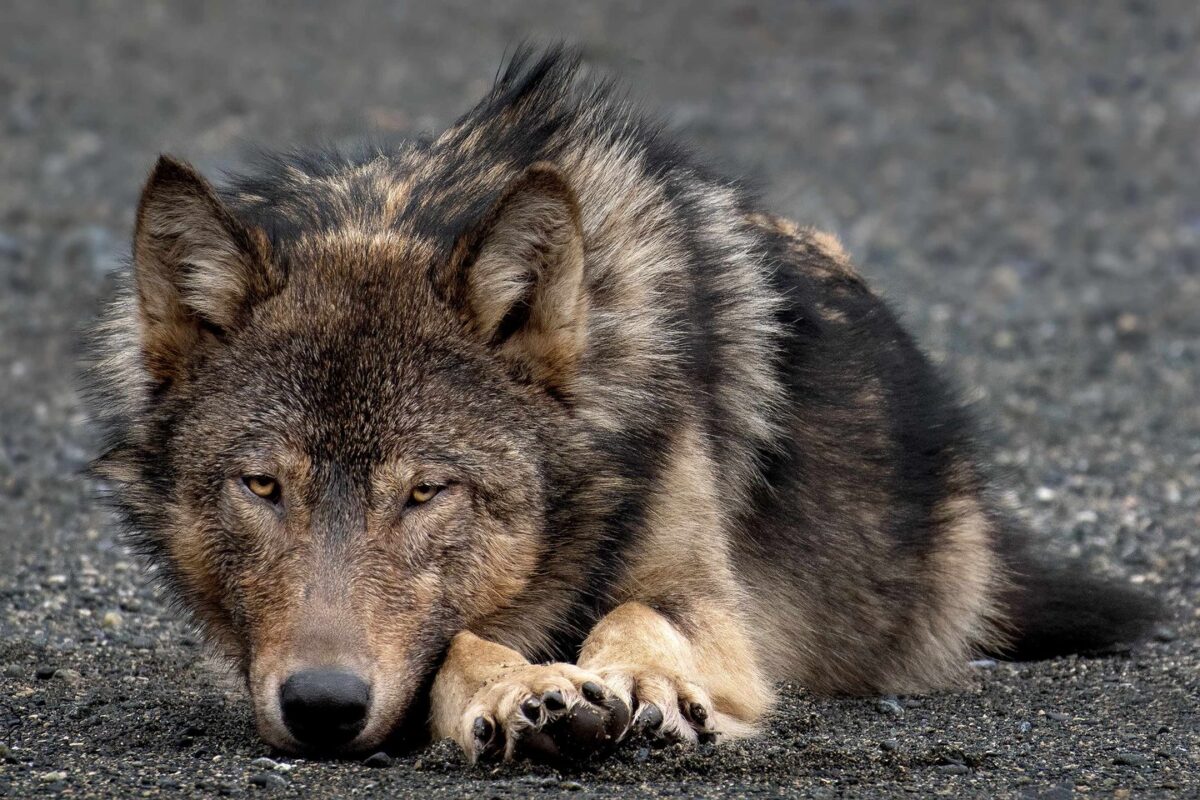
Dr. Danielle Fraser is a research scientist at the museum and is also the director of the Beaty Centre for Species Discovery. A palaeoecologist and evolutionary biologist, her research is focused on fossil mammals, and she has been looking at ancient wolves in museum collections to determine why wolves have outlived other large animals over time.
Fraser wants to know why and how ancient wolves survived the Pleistocene extinction era (which ended about 12,000 years ago) and uses tools called stable isotopes to study what their diet had been.
In addition to the museum’s already large collection, she and the museum were able to borrow ancient wolf specimens from the Yukon Beringia Interpretive Centre to study.
Fraser says the diet of wolves has changed drastically over time. Some 20,000 to 40,000 years ago wolves were feeding on wild horses that eventually disappeared during the Pleistocene extinction. Today, wolves survive on a wide range of prey animals such as deer and elk, as well as smaller animals such as rabbits, mice and other rodents.
Wolves are commonly believed to pose a threat to livestock, but Fraser argues that they aren’t as dangerous as we think.
“We’re impacting wolf populations much more than they’re impacting our livestock or affecting humans directly,” she explains.
‘We’re impacting wolf populations much more than they’re impacting our livestock or affecting humans directly.’
— Dr. Danielle Fraser, research scientist, Canadian Museum of Nature
Fraser believes that sharing information about wolves is an important first step in improving the relationship between humans and wolves. It’s something she hopes her research and the exhibit will help accomplish.
Fraser is also encouraging others to get involved with conservation agencies and understand what can be done to save wolves from habitat destruction and other threats while protecting livestock.
Nicole Dupuis, an exhibit content developer at the museum, helped conceive the themes, curate objects, write labels and create interactive experiences for visitors.
#WolfToWoof is one interactive display that trances the relationship between wolves and dogs. Our furry companions have a direct relation to ancestral wolves, and guests are encouraged to share a photo of their dog by tagging @MuseumOfNature and using the #WolfToWoof hashtag to have the image featured online and at the museum.
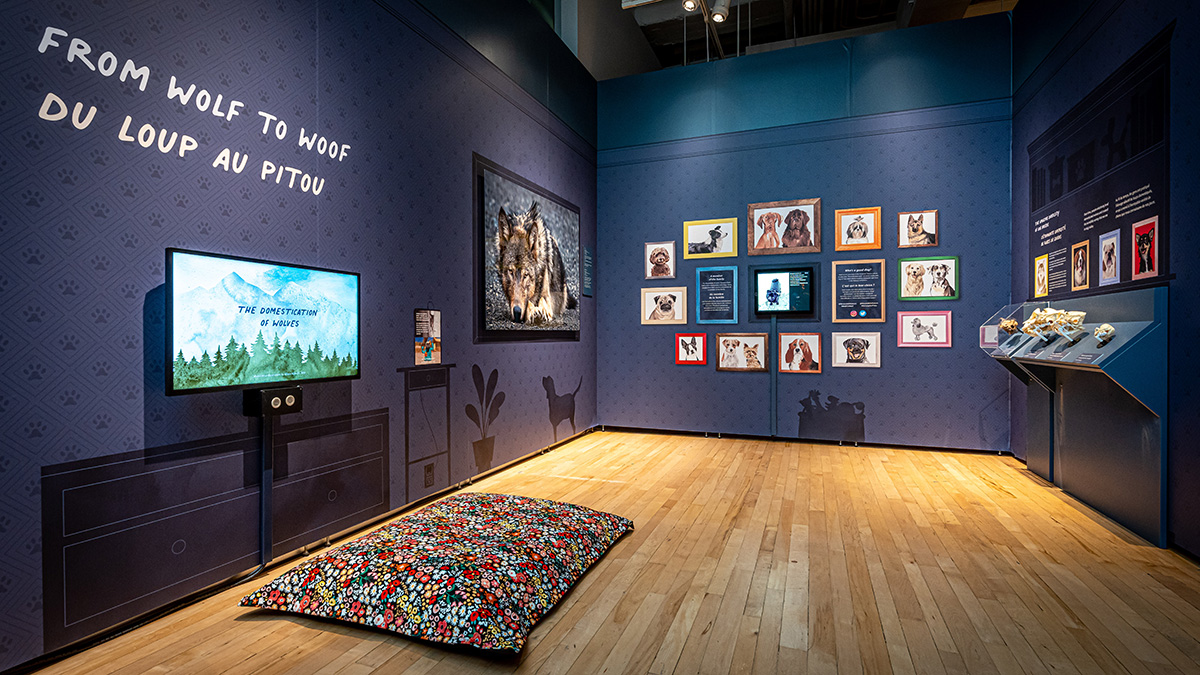
The exhibit also features kid-friendly hands-on activities that have been an attraction during March Break (March 13-17). Children have been able to build a wolf paw print from modelling clay and play a guessing game with skull models of a wolf, coyote, dog and cat.
Dupuis said it’s important for children to learn about wolves to discourage a reaction of fear and encourage a response of awe and amazement around the majestic creatures.
“You only take care of the things you care about,” said Dupuis, who is hopeful that children will get a sense of wonder and connection after visiting the wolf exhibit.
Fraser said she’s also excited about kids learning from her research in the exhibit.
“Hopefully it ignites imagination and for kids to grow up not thinking that they’re the ‘big bad wolf’ but instead that they’re a species that we need to protect.”
— Michelle Valberg, photographer, Canadian Museum of Nature wolf exhibit
“We want to communicate to children the importance of wolves and show them how cool and interesting they are,” said Fraser. “Maybe then they’ll grow up with a positive perception of wolves.”
Michelle Valberg, a professional photographer of 35 years who has worked previously with the museum, has had several encounters with wolves in her work.
Valberg’s photography is featured in the exhibit in 11 large images of wolves she’s encountered in British Columbia and Yellowstone National Park in the United States.

[Photo © Martin Lipman]
Being a wildlife photographer takes a lot of patience, as Valberg has spent 16-hour days waiting behind a blind — a hiding spot designed to reduce the chance of being spotted by an animal — for a wolf that may or may not make an appearance.
Valberg said such waits are often well worth it. Wolves, she said, have “fascinated our imagination for so long. They’re gentle, beautiful creatures.”
Valberg said she hopes her images at the exhibit will ignite conversations about wolves, fuelling “a general knowledge, appreciation, conservation, understanding, eye-opening experience … it’s an opportunity for people to learn more about wolves.”
She added that she’s hopeful the exhibit and her photos will help undo the many misrepresentations that surround wolves, especially for younger generations.
“Hopefully it ignites imagination and for kids to grow up not thinking that they’re the ‘big bad wolf’ but instead that they’re a species that we need to protect.”
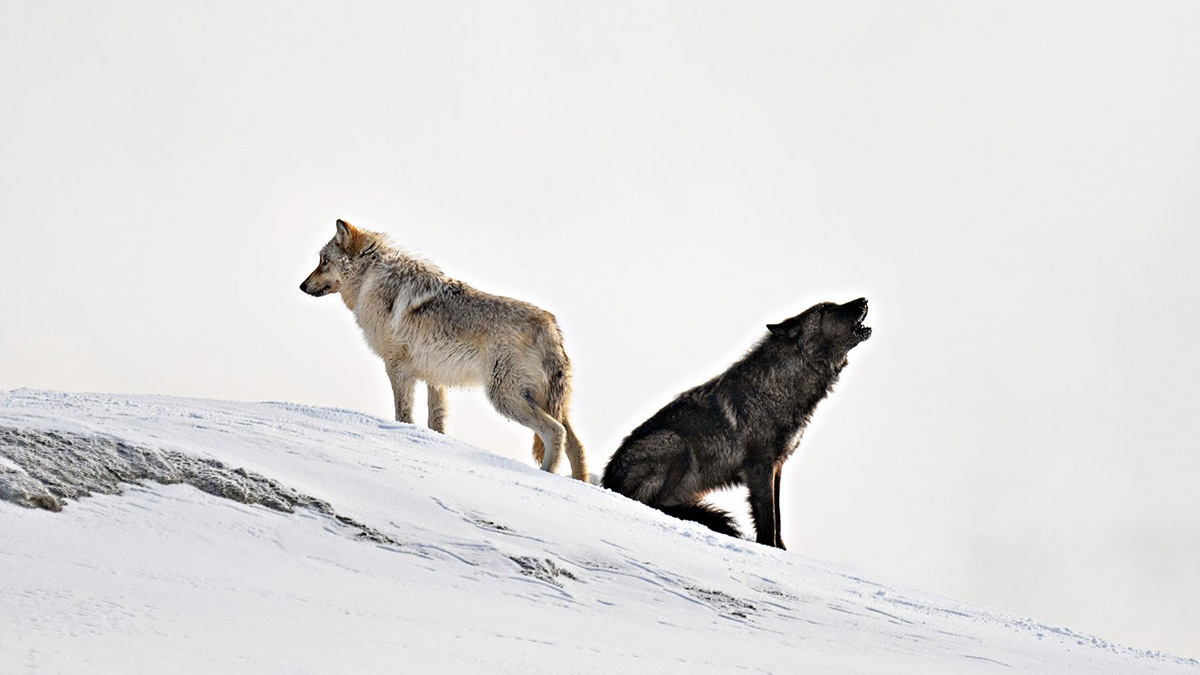
[Photo © Michelle Valberg]
Wolves are an integral part of many ecosystems. They are known as a keystone species, meaning that other animals in the ecosystem largely depend on them. If they were removed, the ecosystem would change drastically and have a ripple of negative effects.
The knowledge and recognition of the importance of wolves is crucial in creating a future in which all species can co-exist — that’s the message that Fraser said she hopes her research will help accomplish over the next year.
“As human landscape occupation and modification expands, we’ll see wolves being pushed into smaller spaces,” said Fraser. “We’re privileged that in Canada wolves have a large portion of the country where there is not a huge population of humans.”
‘As human landscape occupation and modification expands, we’ll see wolves being pushed into smaller spaces.’
— Dr. Danielle Fraser, director, Beaty Centre for Species Discovery
Fraser notes that there has already been a decline in caribou populations, one of the main sources of food for wolves. If the loss of caribou is not halted soon, Fraser fears that will lead to a loss in wolf populations as well.
The Government of Canada has listed the caribou as a species at risk. Weber Artic, a Wakefield, Que.-based polar adventure tour company, said in 2020 that Canada’s caribou population has seen a sharp decline in the last 50 years. Globally, caribou populations have surpassed a 40-per-cent decline, classifying them as endangered.
“Without us doing anything, there is no positive outlook for wolves in the 100- to 200-year time-frame,” said Fraser. She also said that halting human expansion into natural ecosystems will present a more positive future for wolves.
“Wolves are ecosystem engineers; they shape the places in which we live.”

